
We’re tracking how users engage with our platform, where they fall out of our funnels and what the overall trends in behavior are. The data we’ve gathered has helped us make several important decisions about where to improve our platform.

Tiffany Wong
Co-founder, Pry
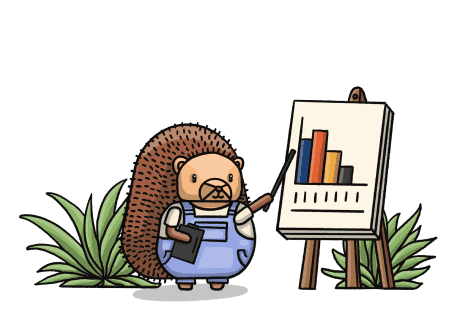
Funnels
Find drop-off across a series of actions
Filtering
Set filters for individual steps – or the entire funnel – by user property, group or cohort, or event property
Graph types
Track user progression between steps, conversion time between each step, and how a funnel’s conversion rate changes over time
Step ordering
Choose between a sequential series of steps, a strict order, or any order of steps that lead to conversion
Granular controls
Set conversion window limit, add exclusionary steps, set attribution type, and see the relative conversion rate between each step
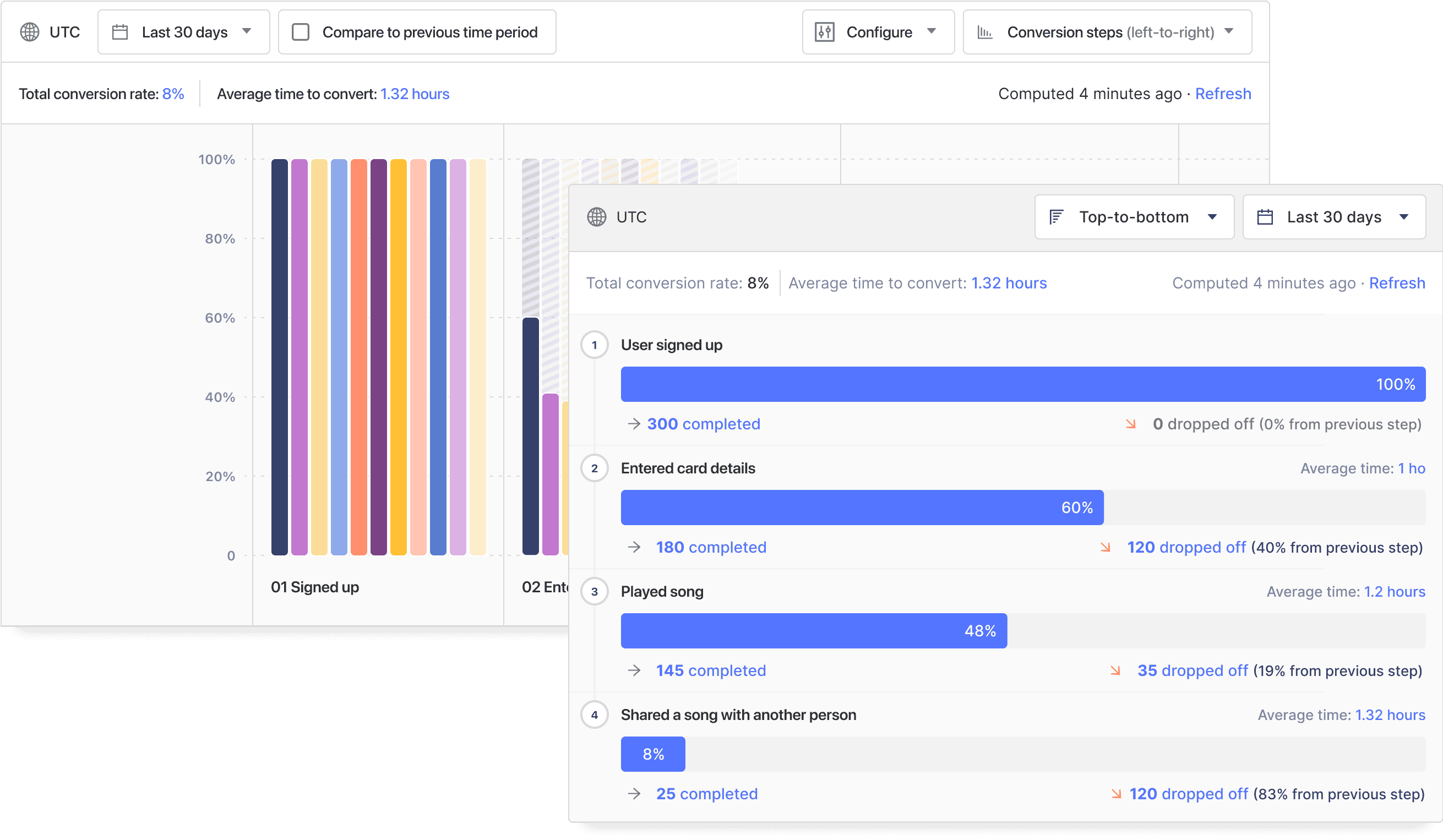
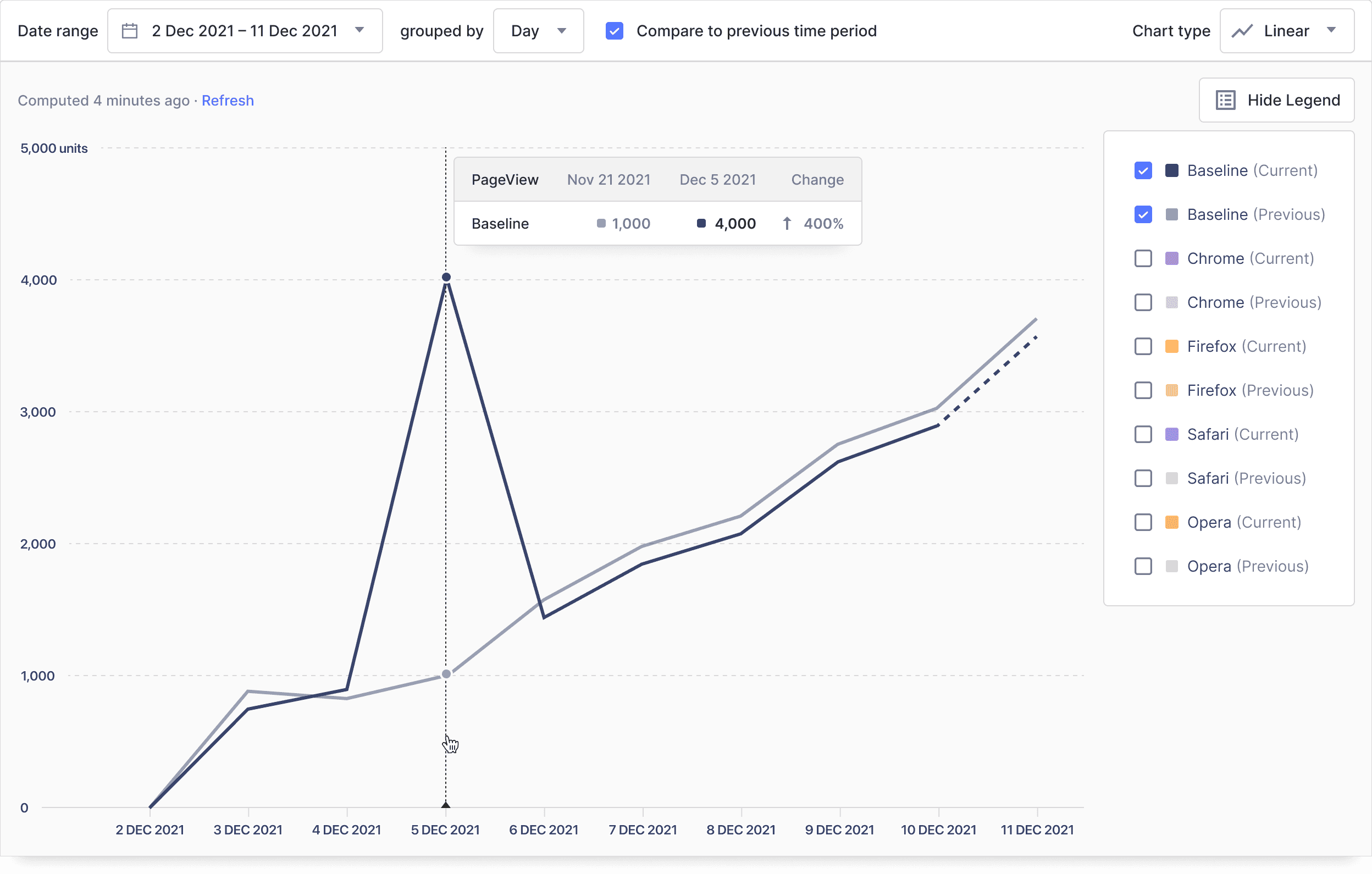
Graphs & trends
Visualize user data with graphs, tables, charts, maps, and more
Trends
Plot any event over time, such as a feature being used. You can even do math and multiple series
Advanced filtering
Apply however many filters you need to or breakdown by any event, user or group property with advanced logic
Breakdown tables
Break out your trends by any event property
Querying
Speed up long running queries across large datasets in one click, if you want to
User paths
Set start and end points to see how users navigate your product, website, or conversion funnel
Step insights
See who dropped off at each step, who did or didn’t complete a step, and the drop-off rate
Wildcard groups
Group similar steps into a mega-step (where any of a group of events can trigger a step)
Exclusion events
Prevent specific events from appearing in a path
Granular controls
Visualize any sequence of page views, screen views or events, with up to 20 steps
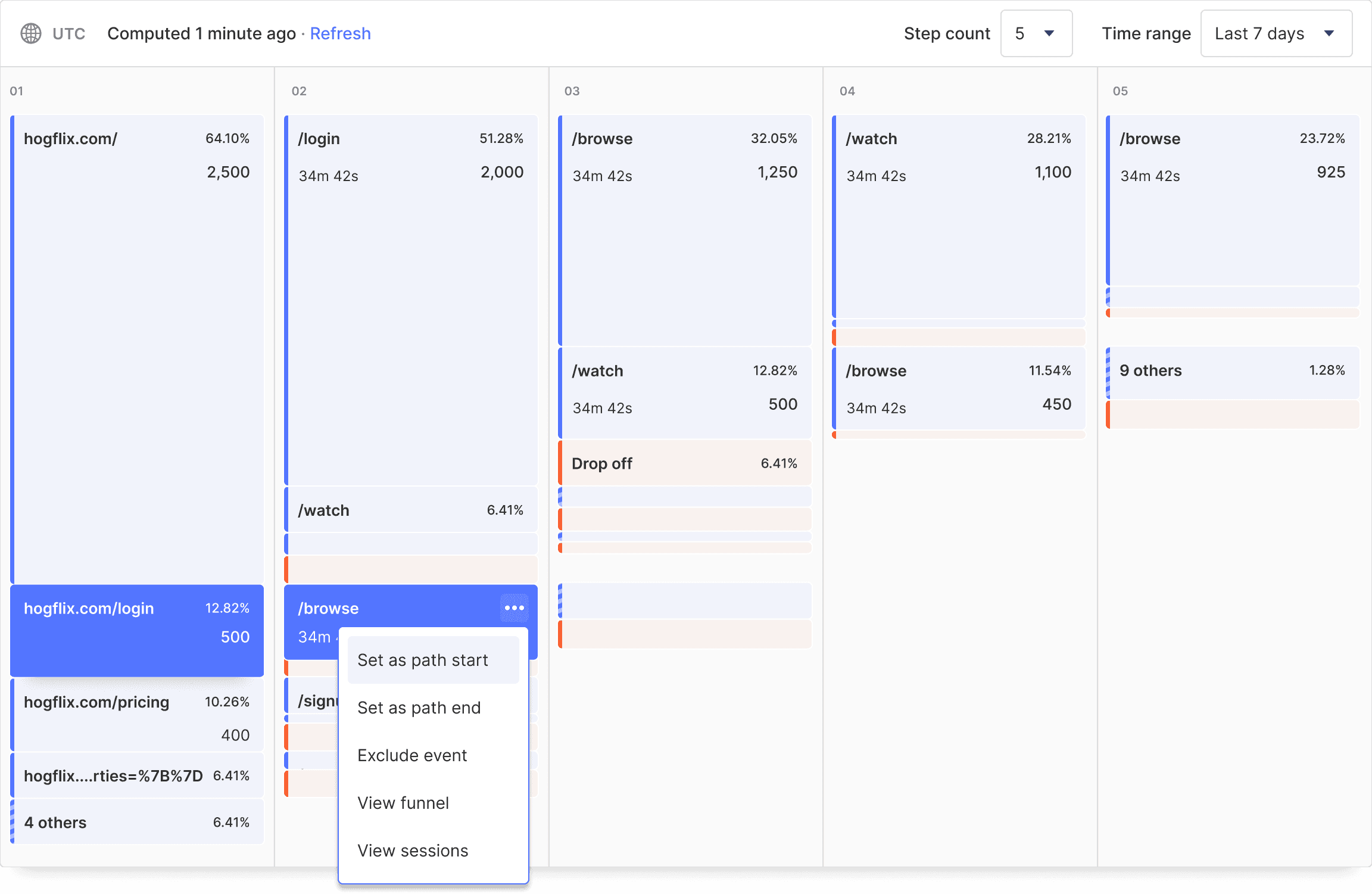
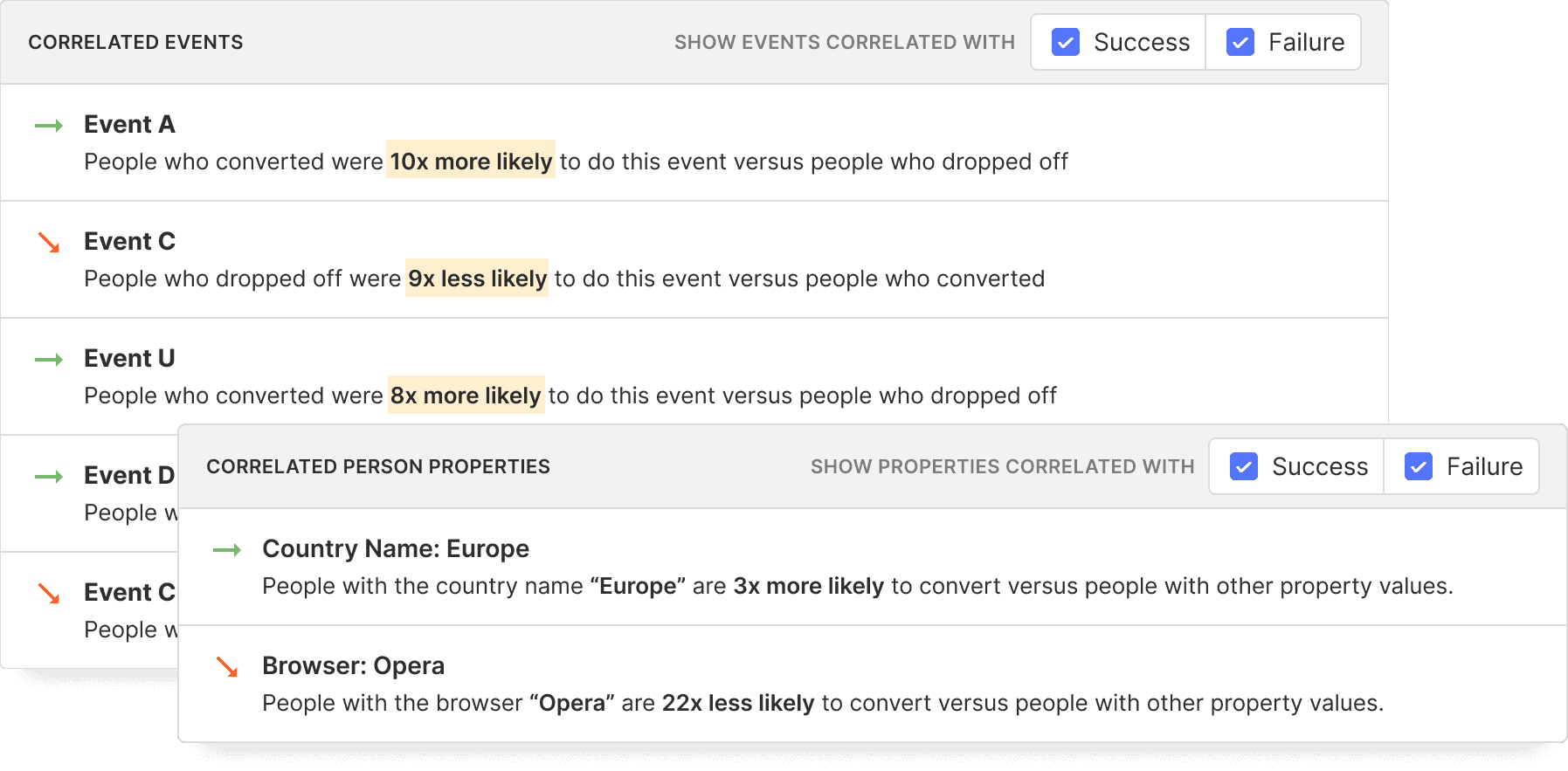
Correlation analysis
When analyzing funnels, correlation analysis highlights significant events or properties that may be useful in determining how likely someone is to converting or churning.
More insight types
Retention, stickiness, and lifecycle views
Retention
See how many users return on subsequent days after first visiting your site or product
Stickiness
Learn how many times users perform a specific event in a period of time
Lifecycle
Discover how your active users break down, highlighting those who have recently stopped being active or those who have just become active for the first time
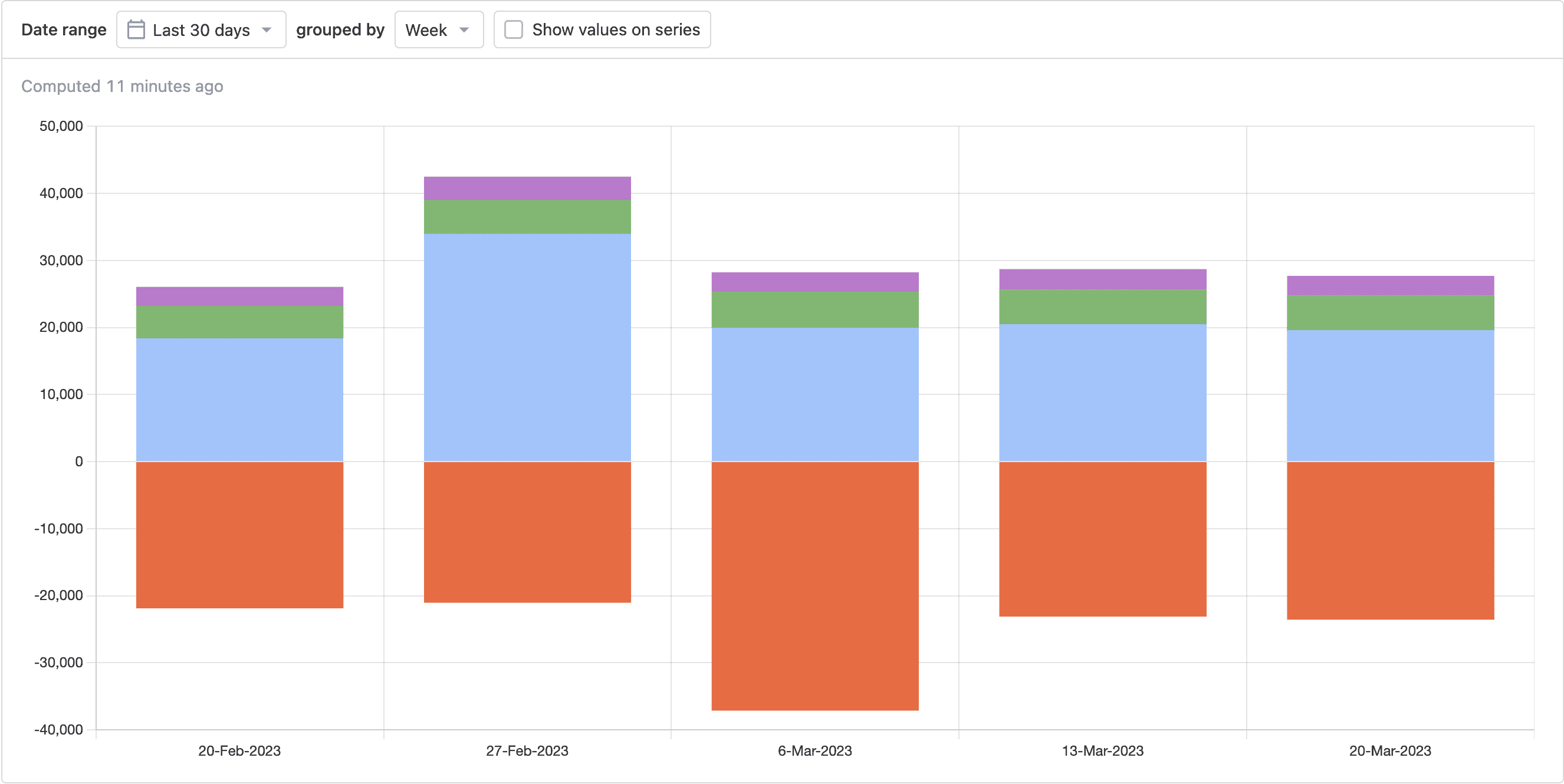
Dashboards
Dashboard filtering
Filter saved insights on a dashboard by anything - event properties, user properties, cohorts - even if a feature flag was active during a user’s session
Embeddable dashboards with auto-refresh
Embed a dashboard iframe and always have near-realtime data - great for showing KPIs on a TV
Weekly updates by Slack or email
Send dashboard updates to a Slack channel or to colleagues via email at any recurring frequency
Access restrictions
Limit dashboard access with role-based permissions or using private projects
Customizable layouts
Configure how many insights appear per row or column
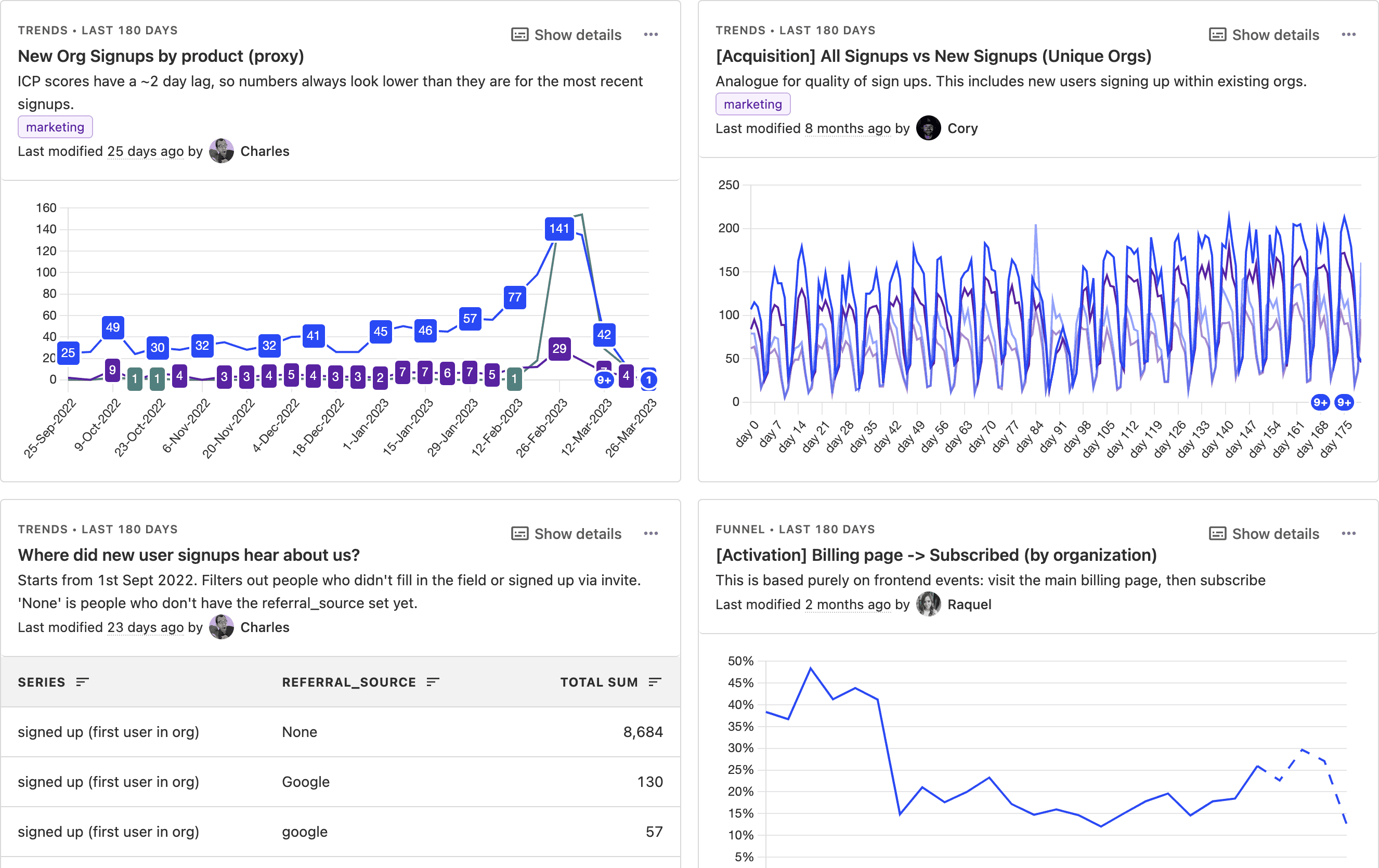
Autocapture
Add PostHog.js to your website or web app to track all event data and retroactively define events
Data visualization
Filter data by user property, group data, and use formulas in queries
SQL
Use PostHog’s filtering interface or switch into SQL mode for more powerful querying
Dashboards and insight subscriptions
Share insights with teams, and get updates when results change
Group analytics
Analyze how any group of people (like an organization) use your product
Pairs with...
PostHog products are natively designed to be interoperable using Product OS.
Session replay
Jump into a playlist of session recordings directly from any point in a graph, or segment of a funnel
Feature flags
See which feature flags were enabled for a user during a session
A/B testing
Filter data down to users within an active experiment, whether part of a control group or a test variant
